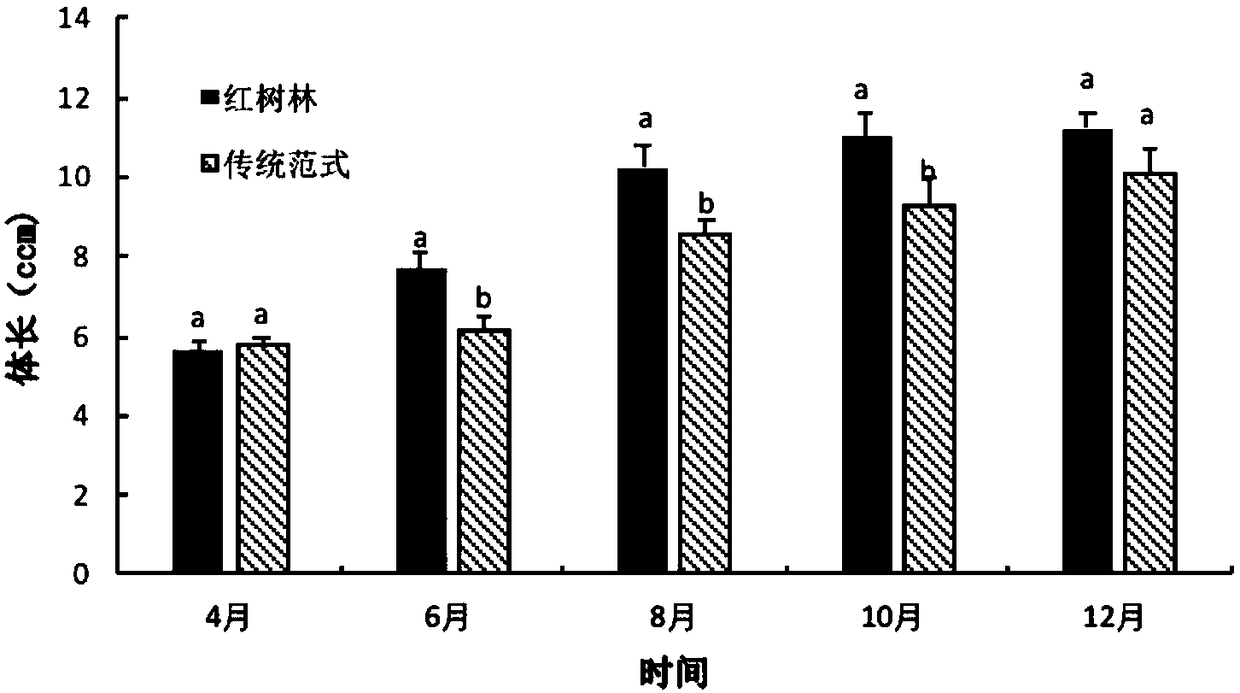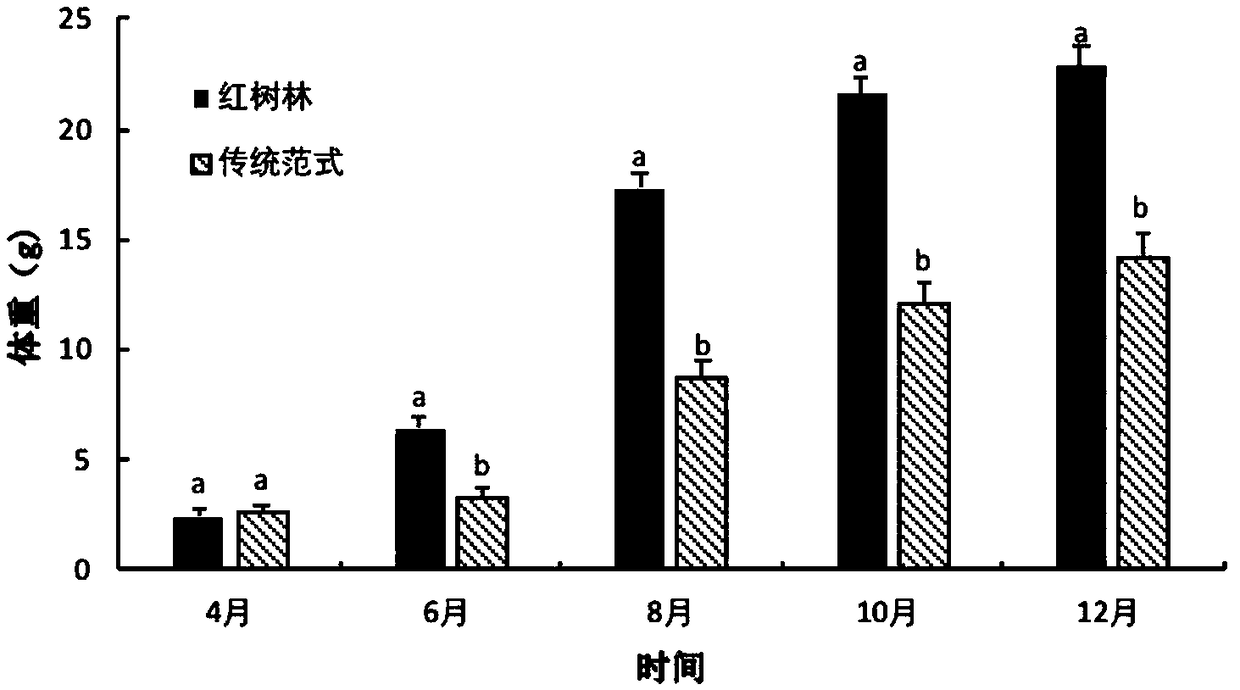Environment-friendly low-carbon breeding method in mangrove forest area
A breeding method and technology in forest areas, applied in fish farming, agriculture, climate change adaptation, etc., can solve the problems of polluting the offshore ecological environment and destroying water sources for farming, so as to increase the market price, achieve standard discharge, and reduce nitrogen Effects of Pollutant Emissions
- Summary
- Abstract
- Description
- Claims
- Application Information
AI Technical Summary
Problems solved by technology
Method used
Image
Examples
Embodiment Construction
[0025] Experimental design: The mudskipper breeding experiment was carried out in the southern part of Yongxing Waiken, Longwan District, Wenzhou City. This area has a mid-subtropical monsoon climate, with annual sunshine of 1442-2264h and average annual rainfall of 1113-2494mm, which is suitable for mudskipper farming. The area of the two breeding ponds is 2 mu, the bottom of the pond is flat, the mud is soft mud, and the salinity is about 10‰-20‰. Build ridges around the 2 breeding ponds. The ridge surface is 0.6m higher than the beach surface, and the width is 0.5m. The ridge is solid and watertight. Dig ditches with a width of 1.0 m and a depth of 0.4 m inside the ridge. After use, dredge them regularly to prevent silt from clogging.
[0026] Experimental pond: prepare the ground for ridges, and the ridges are in a north-south direction, and plant 2-year-old candela on the surface of the ridges. In this culture method, shrimp pond mud is used as the base fertilizer, and...
PUM
 Login to View More
Login to View More Abstract
Description
Claims
Application Information
 Login to View More
Login to View More - R&D
- Intellectual Property
- Life Sciences
- Materials
- Tech Scout
- Unparalleled Data Quality
- Higher Quality Content
- 60% Fewer Hallucinations
Browse by: Latest US Patents, China's latest patents, Technical Efficacy Thesaurus, Application Domain, Technology Topic, Popular Technical Reports.
© 2025 PatSnap. All rights reserved.Legal|Privacy policy|Modern Slavery Act Transparency Statement|Sitemap|About US| Contact US: help@patsnap.com



